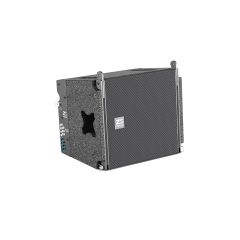Stage monitor speakers are essential for providing sound quality in live performance situations. The location and the way that stage monitors are pointed can greatly effect how clearly performers hear everything from their perspective. Monitors should face the performer and be at an angle 30 to 45 degrees off-axis from them. The idea behind this setup is to create a minimal amount of feedback and provide the performer with clean sound, which helps in remaining on pitch, keeping time & other performance qualities.
Also, the power and wattage capacity of stage monitor speakers is vitally important. Professional stage monitors deliver from 200 to 1,000 watts which supply the punched silk in a powerful enough way at those loud noise levels. In fact, 500 watts of power is generally all that's required for a monitor in small- to medium-size venues where the larger wattage gear would let you hear even more clearly without distortion. Higher wattage monitors or more of them (or both) may be needed to cover the stage appropriately in larger venues.
The EQ settings have a large impact on the sound of any stage monitors, so equalization (EQ) setting are also very important to consider. When shaping the negative 10 decibels EQ for less low-end, thus feedback-susceptible frequencies and more naturalistic mids you can also help improve vocal shine while making even instruments in a mix stand out with ease. This becomes particularly pertinent in live music, with its many different instruments and vocals vying for distinction amidst the performers. Cutting around 250 Hz, for example can to reduce muddiness and boosting just a few decibels at about 3 kHz helps improve vocal presence.

Another best practice is volume levels monitoring. The sound levels should be loud enough so runners will be able to hear themselves and thus perform comfortably, but not too high that it results into overloading the system or hearing damage. Nationally, the Occupational Safety and Health Administration (OSHA) notes that workers exposed to sound at 85 decibels or higher for long periods may begin lose their hearing. This is why live stage monitors need to be kept at safe levels, preferably between 70 and 85 dB as this will vary depending on the room size and type of music being played.
Furthermore, selecting the correct monitor type is important too. You are more than likely already familiar with the last type, wedge monitors or wedges as they offer a compact size and angle shape fitting well on most stages. On the other hand, In-Ear Monitors (IEMs) are becoming more popular because they allow personalized mixes and deliver less stage noise. Although IEMs can cost significantly more, $100–$1,000+/set or higher they help better isolate the performer from outside noise which should result in a much cleaner monitoring source. Because of these advantages, many professional artists would prefer using IEMs for live performances such as Beyoncé and U2.
It is essential to regularly maintain the stage monitor speakers if you want them to remain functional and active for a long time. The speakers components can definitely wear down over time from dust, moisture and just regular physical abrasion (setting up tear downs. The overall sound state will deteriorate until they either fail or start to really degrade in performance! See whether they can help you with cleaning your grilles as well, there is no specific right number to this but if it has been a few months since the last time you cleaned them then doing that could potentially save years in their lifetime. It is the recommended frequency for servicing professional monitors by most manufacturers to keep them at peak performance level.
Ultimately, the catechism or finding of stage monitor speakers should rest upon proper placement and angling (vertebra), powering your monitors correctly w/ a balanced power load/volume level – secta guidlines & EQ settings biparetenu These techniques can allow performers to hear themselves better, reduce feedback and ultimately save their hearing in order for a successful live performance.